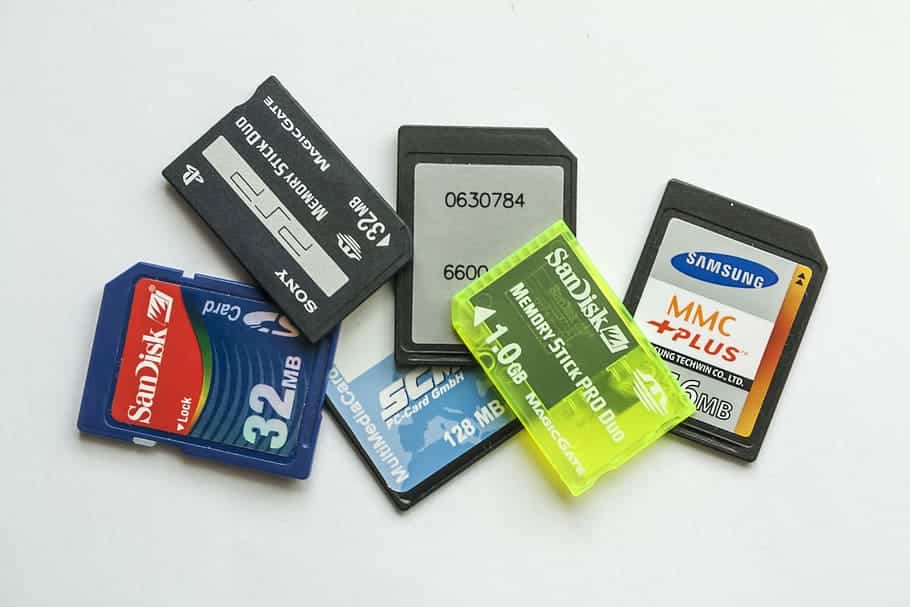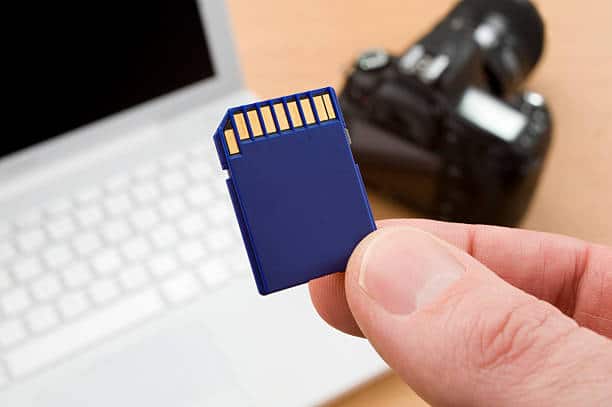Regarding digital storage, the SD card reigns supreme in versatility, slipping into everything from cameras to phones to game consoles. But just like anything else, these tiny storage workhorses come with an expiration date.
In this article, we delve into the intriguing life cycle of an SD card. We will explore what influences the lifespan of an SD card, how to get the most out of your storage device, and finally when to consider replacing it.

Related: How SD Card Lock Works?
What is the Lifespan of an SD Card?
According to the SD Association, the lifespan of an SD card is largely determined by its usage. The lifespan of an SD card can vary significantly based on several factors. On average, SD cards can endure up to 100,000 write/erase cycles before the cells start to wear out. An SD card with regular usage could last anywhere from five to ten years.
However, it’s essential to note that the quality of the card, frequency of use, and environmental conditions like temperature and humidity can significantly impact this lifespan.
High-quality cards from reputable manufacturers usually last longer and are more resistant to wear and tear. Furthermore, maintaining your card by safely ejecting it from your device, storing it properly, and formatting it periodically can help extend its life.
How to Expand the Life of SD Cards

Extending the life of your SD card entails careful usage and routine maintenance. Here are some tips to keep in mind:
- Use High-Quality SD Cards: Always opt for SD cards from reputable brands. They may be a little pricier, but the investment is worth it in terms of durability and reliability.
- Proper Ejection: Avoid abruptly pulling out the SD card from devices. Instead, use the ‘safely remove hardware’ function on your computer or power off your camera before ejecting the card.
- Format Periodically: Formatting your SD card cleans up remnants from deleted files that can slow down the card. However, remember that formatting erases all data on the card, so always back up your files before doing this.
- Avoid Overloading: Avoid filling your SD card to its maximum capacity. Overloading can wear out the flash memory faster.
- Use Write-Protection: If you’re storing files that don’t need to be modified, use the write-protection switch on the side of the card to prevent unnecessary write/erase cycles.
- Maintain Appropriate Storage Conditions: Keep your SD card in a cool, dry place and store it correctly in a protective case when not in use.
Checking SD Card Health Regularly
Regular check-ups of your SD card health can prevent unexpected data loss and allow you to replace the card before it fails. Here’s how you can do it:
- Use a Card Reader and Your Computer: Connect your SD card to your computer using a card reader. If your computer can read the SD card and access the files, your card is generally in good health.
- Check for Errors using your Computer: You can use the Error Checking tool in the Properties dialog box for Windows. The First Aid tool in Disk Utility can serve this purpose for Mac. These tools scan and fix file system errors on your SD card.
- Monitor Card Performance: Slow data transfer speed or lag in accessing the files can indicate a deteriorating card. If you notice such symptoms, consider replacing your card.
- Use Dedicated Software: Several software tools are available that can check the health of your SD card, including H2testw, F3, or SD Card Tester. These tools can identify bad sectors and other problems that might not be readily apparent.
7 Reputable Brands You Can Buy High-Quality SD Cards From
- SanDisk: Known for its range of storage devices, SanDisk’s SD cards are highly reliable and come in various storage capacities.
- Samsung: Samsung offers high-speed SD cards that are durable and reliable, making them perfect for high-resolution photos and video recording.
- Kingston: Kingston is a well-known brand that offers high-performance SD cards known for their reliability and durability.
- Transcend: Transcend’s SD cards offer excellent performance and durability, making them popular among professionals.
- Sony: Sony offers high-speed, reliable SD cards often used in professional photography and videography.
- Lexar: Known for its high-speed performance, Lexar’s SD cards are designed to capture high-quality images and lengthy video footage.
- Toshiba: Toshiba’s SD cards are known for their high-speed data transfer rates and durability.
5 Signs to Understand that Your SD Card Needs to be Replaced

- Frequent Errors: If you’re constantly encountering error messages when trying to read or write data on your SD card, it might be a sign that it’s reaching the end of its lifespan.
- Corrupted Files: If you find that files saved on the SD card are becoming corrupted and cannot be opened or read, this could indicate that the SD card is failing.
- Slow Transfer Rates: A noticeable slowdown in data transfer speed is another sign of a worn-out SD card. If it’s taking longer than usual to access files, it might be time to replace your card.
- Failure to Mount: If your devices cannot recognize or mount the SD card, this is a significant sign of failure. It indicates that the SD card is not functioning as it should.
- Lost Data: If you start losing data inexplicably or your files disappear without a trace, it’s a clear sign that the SD card is deteriorating and needs to be replaced immediately.
How to Recover Data from a Dead SD Card?
If your SD card has stopped working or appears dead, don’t despair! There are several steps you can take to attempt data recovery:
- Try a Different Card Reader or Device: Before declaring your SD card dead, ensure it’s not an issue with the card reader or device. Try accessing the card through a different card reader or device to ascertain if the card or the hardware is malfunctioning.
- Use Recovery Software: If the SD card is not accessible, you may need to use data recovery software. Several trusted applications are available, such as EaseUS Data Recovery Wizard, Recuva, or Disk Drill. These programs can scan your SD card and attempt to recover lost files.
- Contact a Data Recovery Service: If the DIY software route doesn’t yield results, you may need to contact professional data recovery services. These services deal with hardware and software recovery, and while they may be more expensive, they can often recover files that DIY software cannot.
- Card Repair Tools: If your card is still not working, it might have a corrupted file system. In such cases, you could try repairing it using inbuilt repair tools in your OS, like CHKDSK on Windows or First Aid on Mac.
Conclusion
In conclusion, preserving your SD card’s lifespan requires proactive management, regular health checks, and careful handling. Choosing a reputable brand, avoiding overloading, and maintaining appropriate storage conditions can significantly extend your card’s life.
Regular monitoring of card performance and using dedicated software tools will help you identify potential issues before they escalate. If your SD card fails, recovery tools and professional services provide a safety net for your data.
With these measures, you can ensure your SD card stays healthy for as long as possible, safeguarding your valuable data.
Frequently Asked Questions
Do SD cards go bad?
Yes, SD cards can go bad over time, especially if not properly cared for. Just like any piece of technology, SD cards have a finite lifespan.
The exact lifespan can vary based on the quality of the card, how often it is used, and how it is stored and handled.
Common issues include logical errors, physical damage, wear and tear from repeated writing, and data erasing. Regular health checks and proper maintenance can help extend the lifespan of your SD card and protect your data.
Are SD cards good for long-term storage?
SD cards can be a viable option for long-term storage, but they come with certain caveats.
While they offer convenience due to their small size, portability, and sizable storage capacities, they can be susceptible to data loss over time due to physical damage, data corruption, or wear and tear from frequent use.
Moreover, data stored on SD cards can be vulnerable to accidental deletion or formatting. Therefore, despite their advantages, they may not be the most reliable choice for storing critical data over long periods.
It’s always advisable to have multiple backups for essential data and use reliable cloud storage or traditional hard drives for long-term storage.
What is the Samsung micro SD card lifespan?
The lifespan of a Samsung micro SD card can vary greatly depending on its usage and care. Typically, Samsung micro SD cards can last up to 16 years.
However, frequent writing and erasing of data can shorten the lifespan.
It’s important to note that high-quality cards from reputable brands like Samsung generally have a longer lifespan and are less prone to data corruption.
What is SanDisk micro SD card lifespan?
Like most high-quality SD cards, the lifespan of a SanDisk micro SD card varies largely based on usage and care. Typically, these cards can endure approximately last around 10 years.
Factors such as extreme temperatures or humidity exposure can also influence the card’s longevity.
SD card vs. Flash drive lifespan
The lifespan of SD cards and flash drives largely depends on quality, usage, and care. Both use flash memory technology to store data, but some key differences exist.
Flash drives generally have a longer lifespan compared to SD cards. They are typically rated for hundreds of thousands of write/erase cycles, translating to years of service with normal use.
In contrast, SD cards usually endure approximately 100,000 write/erase cycles, which can be shortened by constant writing, erasing, and re-writing of data.